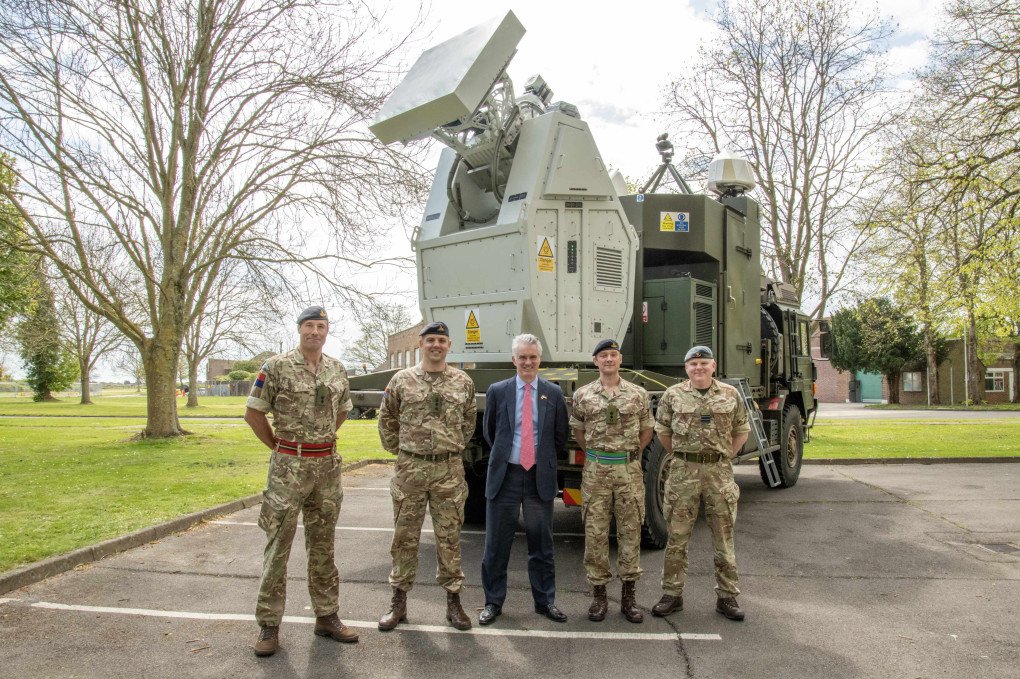- Category
- Latest news
UK’s “RapidDestroyer” Microwave Weapon Could Soon Be Used to Fight Russian Drones in Ukraine
-84ba1b460a975ac79aeb7ed8c30e8632.jpeg)
The UK Ministry of Defence has successfully tested a next-generation microwave weapon designed to neutralize drone swarms — a breakthrough that may soon see deployment on the front lines in Ukraine, according to The Financial Times on April 17.
The system, known as RapidDestroyer, was developed by a consortium led by French defense giant Thales. It emits powerful radio frequencies that can disable or “fry” the electronics of multiple drones at once, making it a promising solution for modern battlefields dominated by unmanned aerial systems. It is also worth noting that the country’s Defence Ministry stated that one shot from the new “cannon” costs only 13 US cents.
“The UK Ministry of Defence has conducted successful trials of a new type of electronic weapon to counter drones, which could be used on today’s battlefields, including in Ukraine,” the article notes.
During recent field trials, RapidDestroyer neutralized two swarms of eight drones each. In total, more than 100 drones were tracked, targeted, and taken down, UK defense officials confirmed.
The FT noted that the technology is still in its early phase: the system is mounted on a flatbed truck and requires a significant power supply to operate. Still, experts believe it could be a game-changer in certain battlefield scenarios — particularly against mass drone attacks, which have become increasingly common in the war in Ukraine.

RapidDestroyer joins a growing family of high-power microwave weapons under development worldwide. The US military, for example, is advancing its own system called THOR (Tactical High-power Operational Responder), which is roughly the size of a shipping container. Another variant, Leonidas, is being developed by tech firm Epirus for use aboard US Navy vessels.
According to the Financial Times, these systems are capable of firing wide beams of energy to disable multiple drones simultaneously. While effective against swarms, they are less precise than kinetic or laser-based defenses and may be unsuitable for protecting sensitive infrastructure like airports due to their indiscriminate nature.
“High-powered microwave systems are potentially a very effective tool for defense against large numbers of drones and possibly cruise missiles, provided their wide cone of effect doesn’t cause more problems than it solves,” said Justin Bronk of the Royal United Services Institute in London.

The Financial Times wrote that such systems may prove especially useful in settings like desert outposts, kinetic front lines, or naval environments — where concerns about collateral damage are minimal.
A senior UK military official noted that drones have emerged as a dominant force on the battlefield, but they face increasing challenges from electronic warfare systems.
“It’s a measures-versus-countermeasures game,” the official said, adding that some drones may be protected using materials that shield their circuitry from electromagnetic pulses.
The UK weapon’s development aligns with broader military trends as electronic warfare becomes increasingly decisive. The US Navy, for instance, plans to test a new high-power microwave weapon dubbed Project Meteor in 2026, which is reportedly capable of shooting down fast-moving anti-ship ballistic missiles.
Read more
Earlier, Ukraine unveiled Tryzub, a homegrown laser system capable of destroying drones and aircraft up to 5,000 meters away.
Ukrainian engineers say Tryzub can neutralize strike drones, glide bombs, cruise and ballistic missiles within a 3-kilometer range, and even engage helicopters, aircraft, and reconnaissance drones at distances of up to 5 kilometers.





-72b63a4e0c8c475ad81fe3eed3f63729.jpeg)

